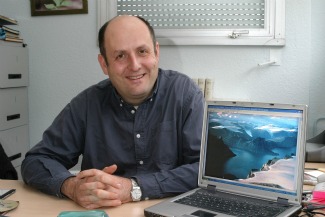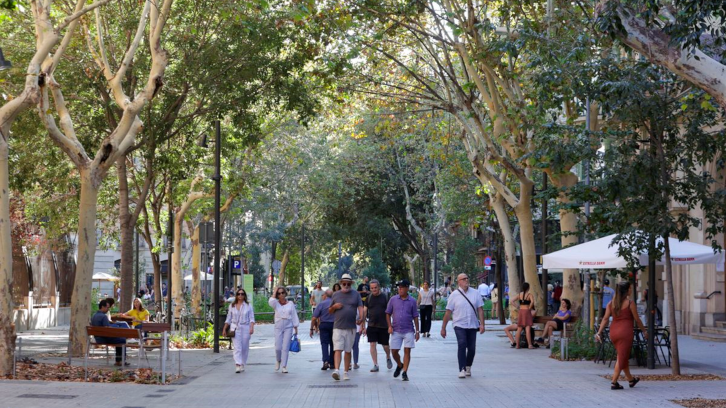Global warming effects of CO2 could be less that those foreseen

Climate sensitivity measures how Earth's surface temperature is affected by changes in the atmosphere. Scientists have developed models to calculate climate sensitivity in relation to an increase in CO2, i.e. to calculate how temperature would rise depending on the increase in CO2 concentration in the atmosphere.
According to the latest report by the Intergovernmental Panel on Climate Change (IPCC), if CO2 concentrations in the atmosphere doubled in relation to preindustrial levels, the temperature of the Earth's surface would rise an average of 3ºC. This is a probabilistic estimation and scientists point out a 66% chance of a rise between 2 and 4.5ºC, although scientists have not been able to narrow down this estimation in the past 32 years.
A research published this week in Science, in which UAB researcher Antoni Rosell took part, significantly reduces the temperature increase predicted by IPCC. According to the research, the average increase in temperature could be of 2.3ºC. It also narrows down the difference between minimum and maximum temperature increase, with a 66% chance of it being between 1.7ºC and 2.6ºC and in no way reaching more than a 6ºC increase; The data is lower than that offered by the Intergovernmental Panel on Climate Change (IPCC) in its latest report in 2007.
Researchers arrived at these results by reconstructing temperatures from the Ice Age (21,000 years ago) using climate simulation models. The Ice Age is a very adequate climate period with which to make predictions on the effect of the rise of CO2 levels in the atmosphere and rises in temperature, given that concentrations of greenhouse gases were far lower than those found immediately before the preindustrial era (little over a century ago), and because surface temperatures and characteristics of the atmosphere at that period are well known thanks to palaeoclimate reconstructions.
According to the authors, "if climate restrictions 20,000 years ago can be applied to future predictions, as can be seen in the model, the probabilities of extreme climate changes in the near future are low compared to what was believed until now". Nevertheless, scientists do wish to remind the public that global warming is real and that the increase in atmospheric CO2 will have important effects.
The research, which included the participation of Antoni Rosell, ICREA researcher of the UAB Institute for Environmental Science and Technology, was directed by researchers from the Oregon State University, and included members of Princeton University, Harvard University, Cornell University, University of Oregon. Funding for the research was provided by the US National Science Foundation.
References
"Climate Sensitivity Estimated from Temperature Reconstructions of the Last Glacial Maximum". Andreas Schmittner, Nathan M. Urban, Jeremy D. Shakun, Natalie M. Mahowal, Peter U. Clark, Patrick J. Bartlein, Alan C. Mix, Antoni Rosell-Melé. Science. 2011. DOI: 10.1126/science.1203513.


